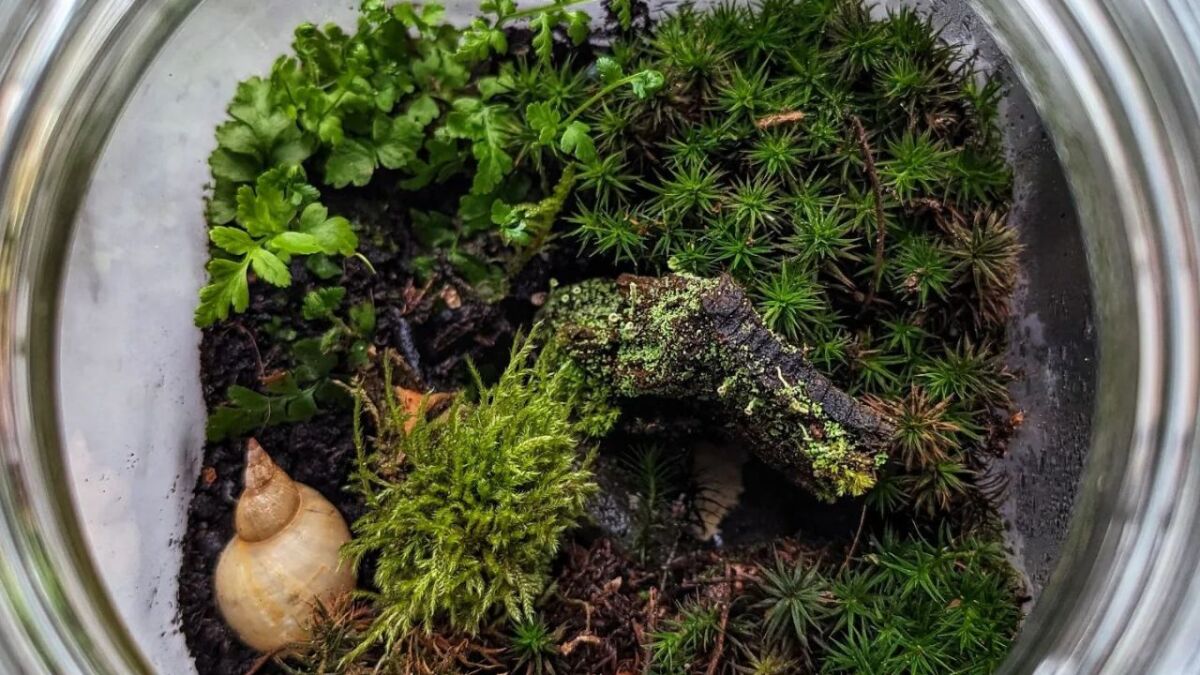
Create a forest in a jar - this is how you bring ferns, moss and lichens onto the windowsill
👉 The key facts from this guide
- A bottle garden is a small, self-sustaining ecosystem grown in a glass or terrarium that allows plants to grow sustainably.
- Small and slow-growing plants like moss, ferns, and lichens are particularly well-suited for such an ecosystem.
- A closed glass container creates a stable microclimate in which water evaporates and is reabsorbed in the plant cycle.
- A bottle garden can be created using forest substrate, plants, and optional decorations such as stones, shells, or deadwood.
- It is important to regularly open the glass to let out excess moisture and provide fresh air.
- The bottle garden should be placed in a bright location, but not in direct sunlight to avoid overheating.
Occasionally, there are circumstances that prevent us from going out into nature. Whether it's the stressful everyday life, bad weather, or simply the lack of nearby forests.
But don't worry, even if you can't make it to the forest regularly, you can bring a piece of the forest directly into your home.
How, you ask? With your own little biotope in a jar.
Yes, you read that right. You can create a miniature forest ecosystem that not only looks beautiful, but also brings a piece of nature into your home.
I'll show you how it works.
What is a bottle garden?
Definition and origin
A bottle garden is a small ecosystem in a jar or terrarium that sustains itself and allows the plants within to grow sustainably.
The English physician Dr. Nathaniel Ward developed this idea in the 19th century. His desire to grow exotic plants in his environment led to the idea of a closed ecosystem.
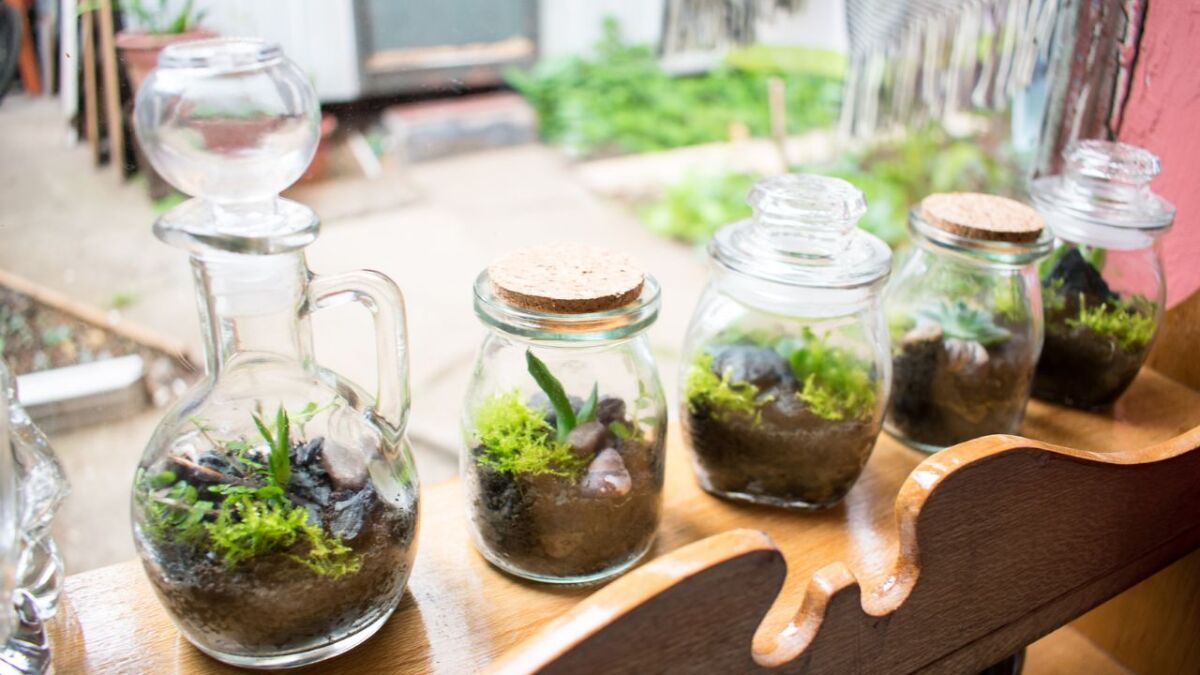
Which plants are suitable for a bottle garden?
Not all plants are suitable for a bottle garden with a miniature forest.
Especially small and slow-growing plants are advantageous here.
Moss, ferns, and lichens are particularly well suited for a small ecosystem in a jar as they are undemanding and do not require much space.
Why is a closed container necessary for an ecosystem in a jar?
A closed glass container or terrarium creates a stable microclimate in which the plants feel particularly comfortable.
Through the closed system, the water can evaporate in the plants' cycle and be absorbed again, creating a self-sustaining ecosystem.
Building a forest garden in a jar yourself
Yes, you read that right. You can create a miniature forest ecosystem that not only looks beautiful, but also brings a piece of nature into your home.
Such a biotope can contain a small fern, moss, and deadwood and then looks like a small forest.
Imagine how this little green paradise on your desk or windowsill shines while you drink your morning coffee. It's a little piece of wilderness that always reminds you of the beauty and tranquility of nature.
You've become curious and wonder how you can create your own miniature biotope?
No problem, here is a simple step-by-step guide. First, let's look at the materials.
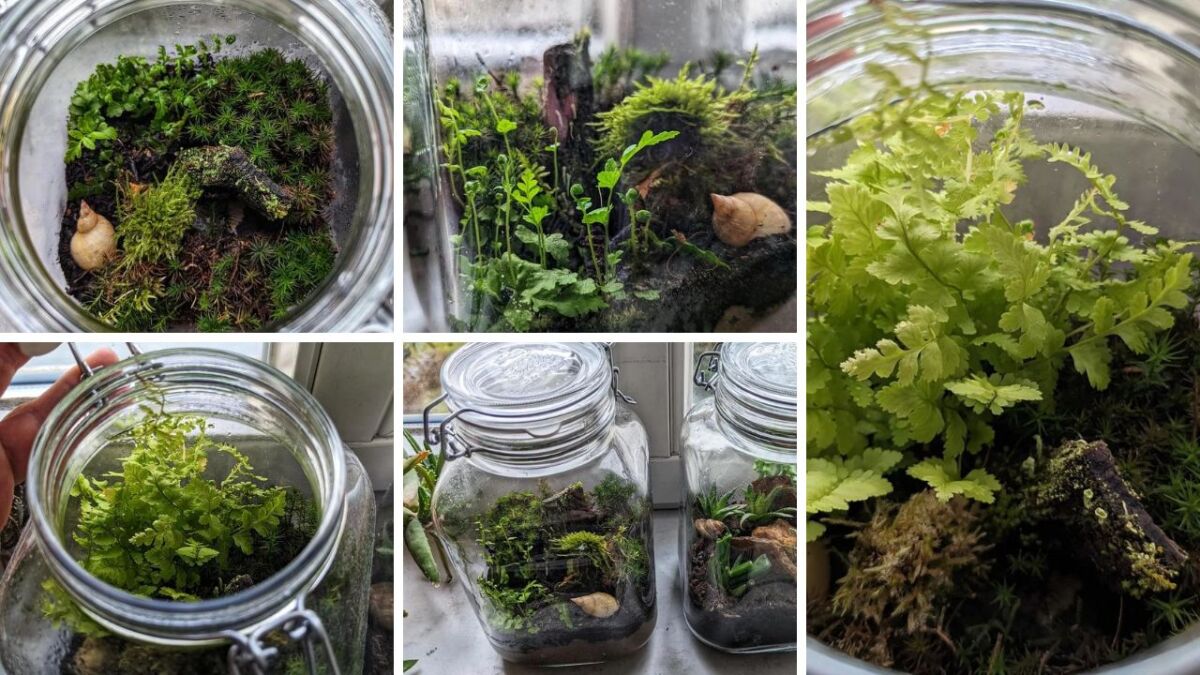
The Hermetosphere (the glass)
The hermetosphere, also known as a closed vessel, is the first step in building a bottle garden.
This is a glass container or terrarium with a sealable lid. The container should be large enough to provide enough space for the plants to grow.
I bought my glasses on Amazon. It was important to me to have a large opening. Because for planting, you should be able to reach in with your hand.
You can find them here:
- PREMIUM GLASS & AIRTIGHT LIDS: These airtight jars are made of food-grade glass, no smell, and 100% BPA-free. Clamp jars are sealed with a food-grade rubber gasket cover and a stainless steel locking clip design to ensure that your food is sealed and never gets bad, keeping fresh
- HAVE IT ALL: All food jars with lids have special safety packaging. These 128 FL OZ glass canning Jars are 10.6’’ tall, 6.7’’ at the bottom and come with 1 replaceable silicone gasket. In addition, the lead-free glass candy jars are 100% recyclable. Let these round candy jars add color to your home and kitchen
- EASY TO USE: The sleek transparent bottle body and wide mouth design make these gallon jars look more beautiful and practical, and you can easily view and grab them with just a glance. Of course, you can also enjoy watching the process of food fermentation
- EXCELLENT ORGANIZATION SET: What a great thing to put the prepared food in a big jar and give it to your favorite friend. And these multifunctional airtight glass jars can perfectly store delicious foods in your home or kitchen for pasta, coffee, beans, sugar, candy, biscuits, snacks, rice, noodles, flour, seeds, shells, pickling salt, powder, etc
- Anti-Crack Tips: Soak the jars with airtight lids with warm water before adding boiled water. Avoid SUDDEN temperature changes, such as adding boiled water without a warm-up process or putting a hot jar on a cool or wet surface
$29.99
View ProductWhether you use a glass container or a terrarium depends on the size and number of plants.
Choose a large container if you want to accommodate many plants, alternatively you can also place several small bottle gardens on the windowsill.
The substrate
The substrate forms the basis for the growth of the plants. Many guides recommend using special soil for terrariums.
I got my soil from the forest. Let's not make it too complicated, okay?
Make sure that the substrate is not too wet or too dry, as this affects plant growth.
Furthermore, be careful not to bring any insects with you when collecting soil from the forest.
Optional: Gravel
If you are unsure how much water to pour, get some gravel. It goes at the bottom of the glass so that water can drain properly.
Optional: Charcoal
Some guides recommend using charcoal or even activated charcoal to disinfect and purify water.
If you like, get some. I didn't use any.
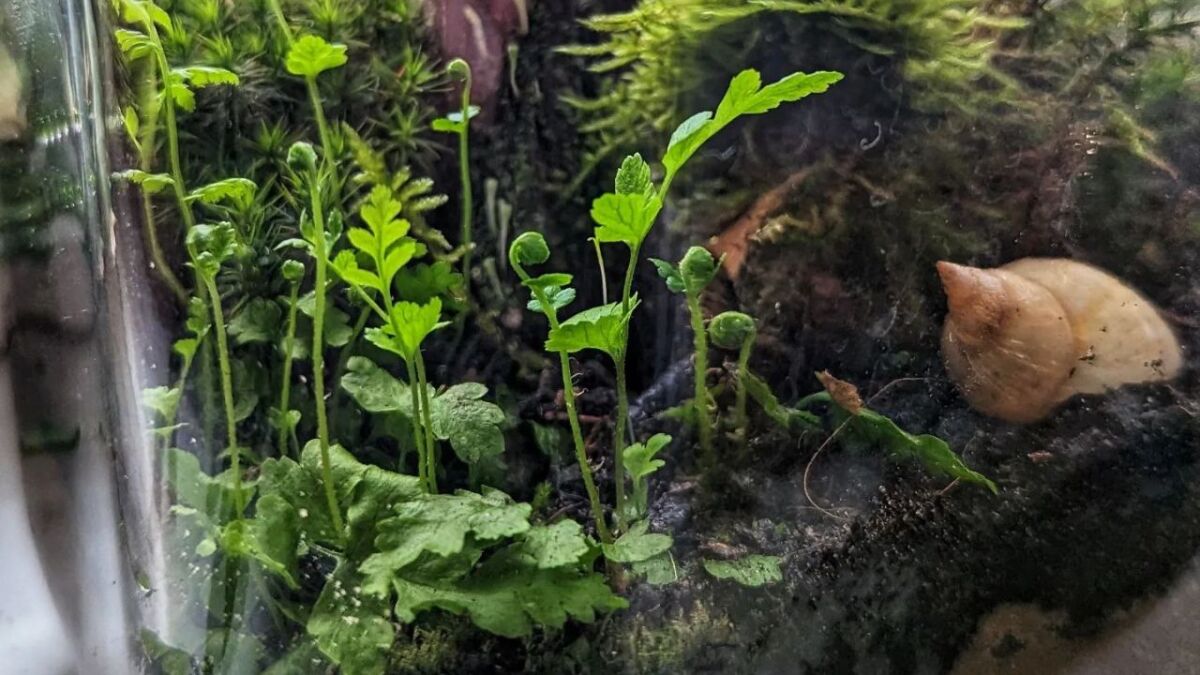
Plants for the Forest Terrarium
Choose plants that grow slowly. I've found that moss and ferns work great.
Sporadically, I will also pick out some dead wood with lichens on it. I can also imagine using a fresh shoot from a coniferous tree, but you will need to trim it occasionally.
Decorations for the Forest Terrarium
You can also add decorations to your forest garden in a glass. Here are some ideas:
- Stones
- Empty shells
- Empty snail shells
- Deadwood (like Punk Wood)
- Fungi
- Bark
- Old seed pods/cones
- Leaves
- Glass beads
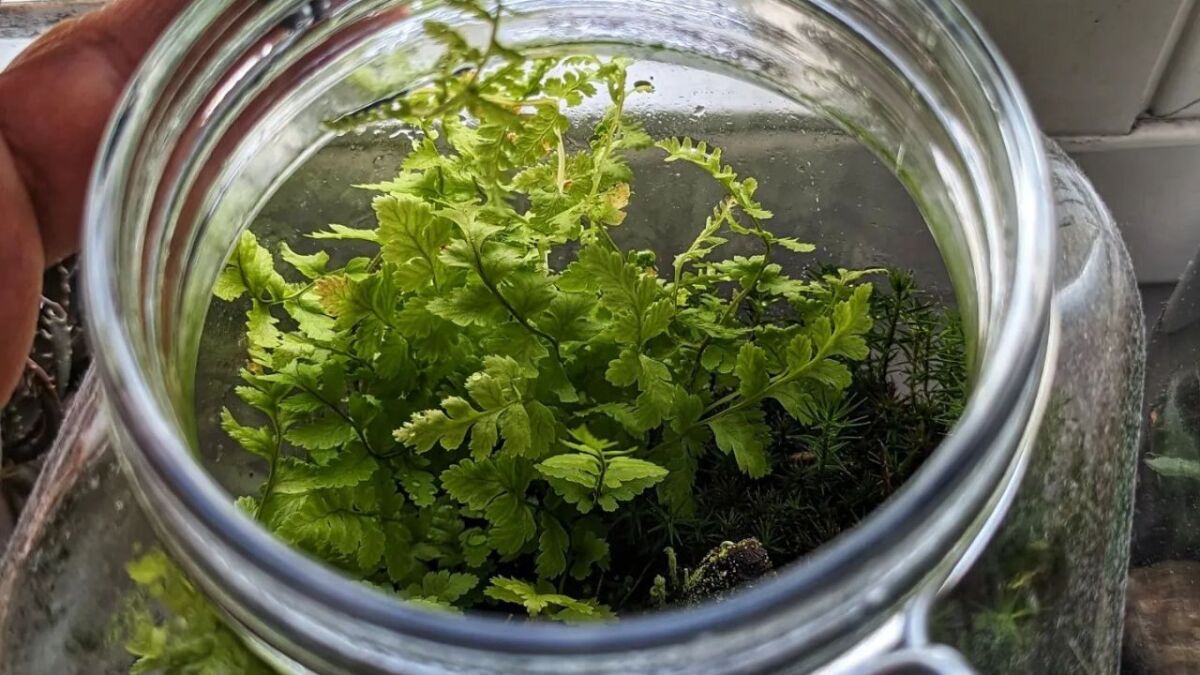
Planting your Forest Terrarium
Great, you have everything together! Now it's time to put it all together, and it's not difficult at all.
Step 1: Plant your mini-forest
Put the substrate into the glass. Then carefully add your plants (ferns, mosses, etc.) to the soil. You can also add a small piece of deadwood to enhance the forest feel.
Step 2: Water and light
Now add enough water to keep the soil moist (but not soaked). Put the glass in a spot with indirect light and watch as your little forest comes to life.
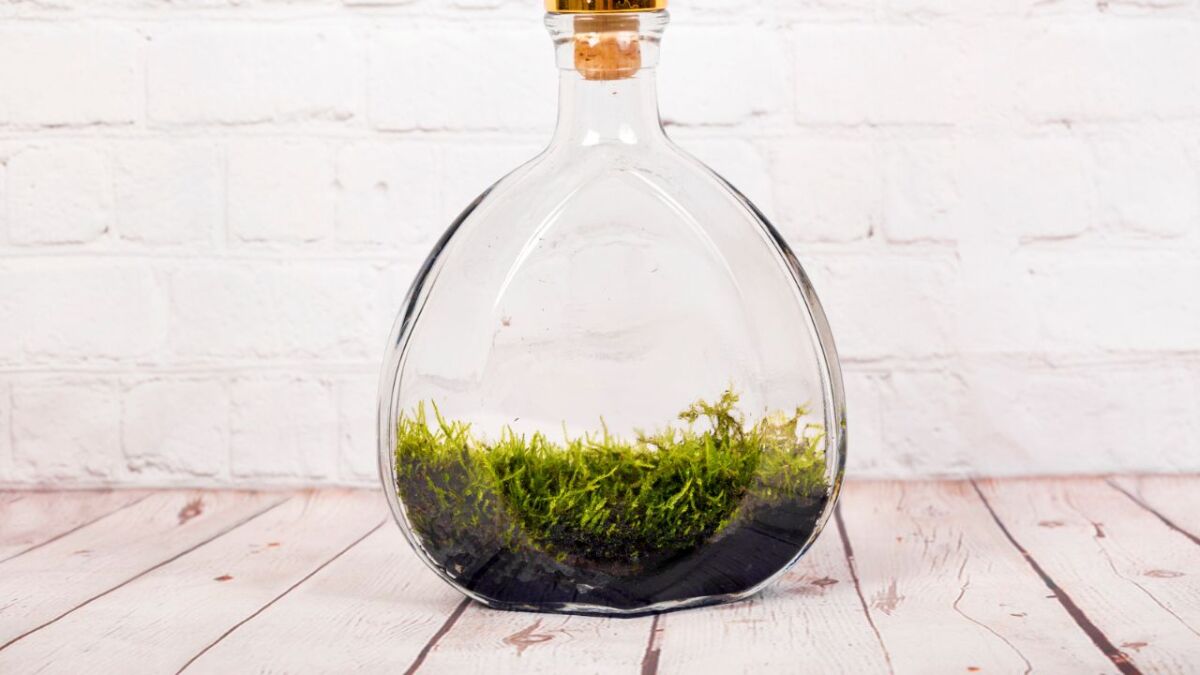
Important: Carbon dioxide and oxygen in the bottle garden
A closed ecosystem does not need water exchange or constant watering - an independent system is created by the circulation of carbon dioxide and oxygen in the air.
However, make sure that the glass container or terrarium is not always completely airtight, as the plants also require air.
I open the lid every few weeks to let in some fresh air. I also do this when I see that there is too much moisture in the glass.
Important: The influence of moisture and sunlight on the bottle garden
Since the system is based on a closed circuit, the bottle garden must not be too wet or too dry.
Window sills are the ideal place for a bottle garden, as the air humidity is higher here. However, do not place the glass container or terrarium directly in the sun to prevent overheating of the glass container.
Important: Nutrient supply in the closed ecosystem
Since the bottle garden is a closed system, it does not need additional fertilization or nutrient supply.
The nutrients contained in the substrate are sufficient to support plant growth. Therefore, pay attention to good soil.
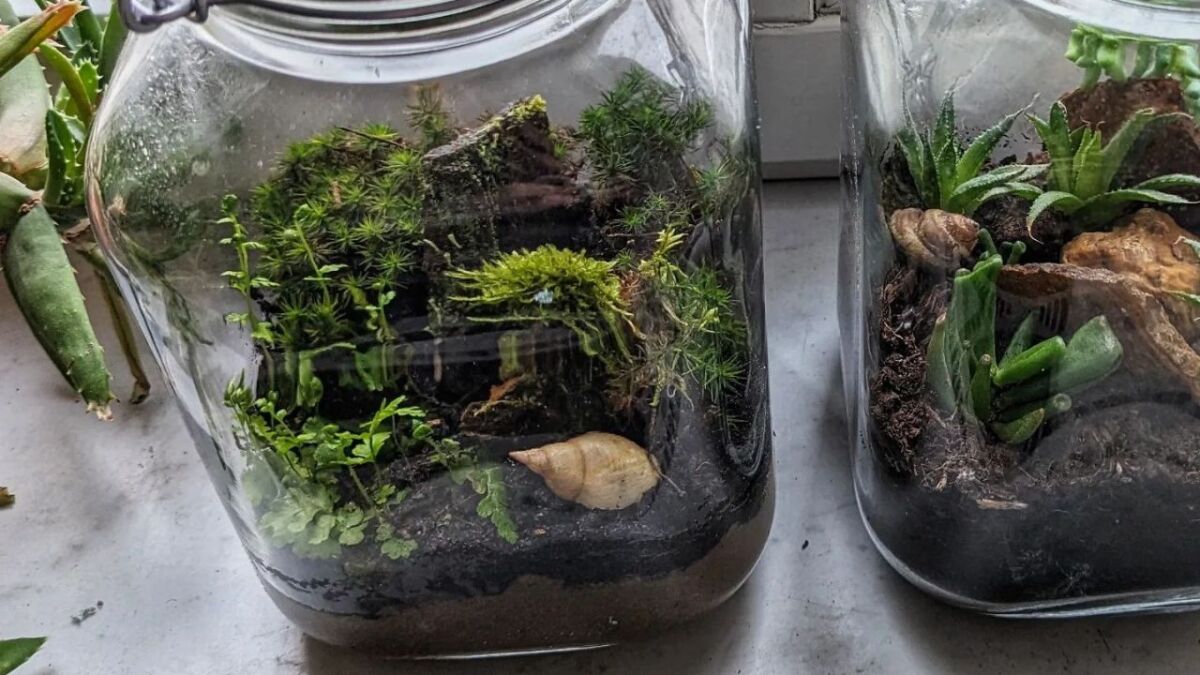
Tips for a Low-Maintenance Miniature Forest in a Glass
Allow excess moisture to escape
A bottle garden must not be too wet, or else it may lead to mold growth. Therefore, make sure that excess moisture can escape by opening the glass container or terrarium at regular intervals or using a funnel as a vent opening.
The small depression - returning excess water
If there is too much water present in the substrate, a small depression in the substrate can help to return excess water. This small depression allows for the excess water to return to the water cycle of the bottle garden.
Avoid direct sunlight if possible
Although plants naturally require sunlight, the bottle garden should not be exposed to direct sunlight. A bright location is ideal, but the glass container or terrarium should not be placed in direct sunlight to avoid overheating.
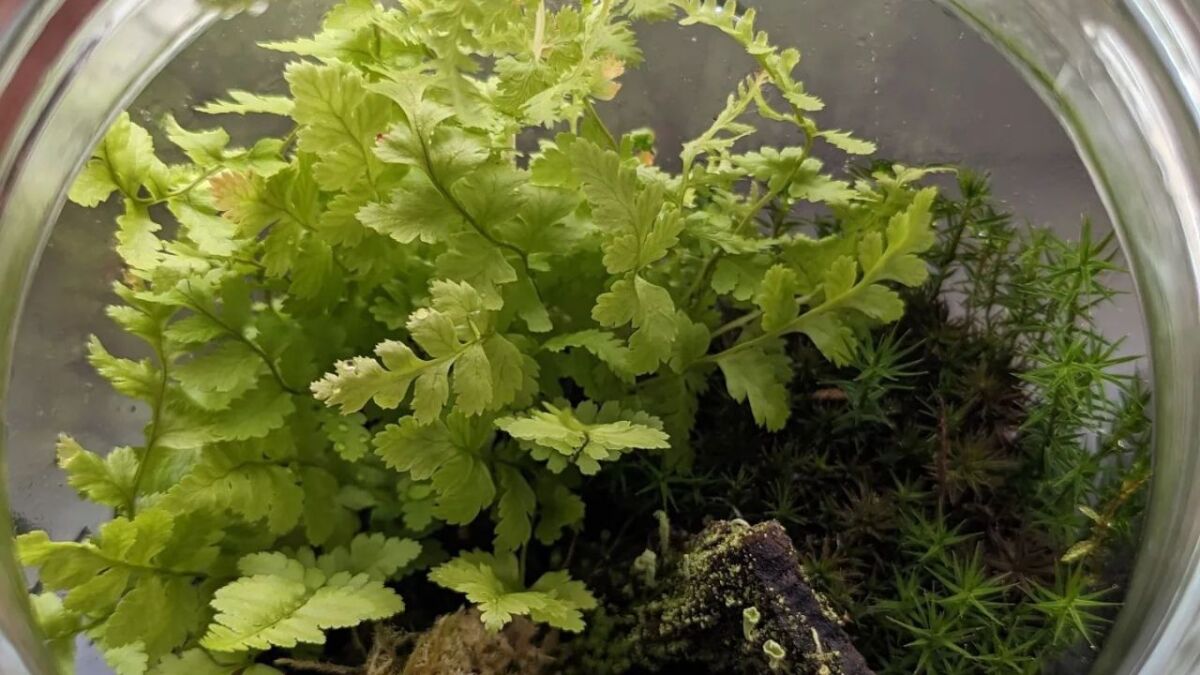
Condensation and fogged containers in the bottle garden
A fogged glass surface is a good sign, as it indicates that a cycle is taking place in the bottle garden.
However, make sure that too much condensation does not accumulate in the glass container or terrarium, as this can lead to mold growth. Good ventilation and occasional opening of the glass container or terrarium can help to avoid mold growth.
Evaporating Water and the Circulation in a Bottle Garden
Throughout the day, the water contained in a glass container or terrarium evaporates and is absorbed by the plants once again. This type of water cycle ensures a constant humidity in the bottle garden and is essential for the plants' growth.
Summary
Imagine having a tiny forest, an entire ecosystem in a bottle. A bit like in "Alice in Wonderland," but without the rabbit hole, right?
A forest bottle garden is exactly that.
A little piece of forest that fits comfortably in the palm of your hand. And the best part is that it's self-sufficient.
Fern, moss, and lichen are the ideal companions for this tiny wonder. They grow slowly and enjoy the peace inside the glass container.
To create this micro-woodland, all you need is a glass container with a lid and a little forest soil (optional gravel and perhaps some charcoal).
The plants nest in the forest soil, drink a little water, and enjoy their new glassy view.
And there you have it - a piece of nature, right on your windowsill.
A small, green refuge that reminds you of the beauty of nature when everyday life gets stressful. A bit like a mini-forest walk without mosquitoes and rain.
Sounds like a good thing, doesn't it?


Author of the guide
Martin Gebhardt
Hey, I'm Martin. On my blog, you will learn the basics and numerous details about living in the wild. I think survival, bushcraft and the good life in nature are the keys to happiness. Find me here on Instagram or on YouTube. You can find more about my mission on the About Me page.
Was this guide helpful?
29 people found this guide helpful.
5.00 out of 5 points (29 Ratings)
Comments (0)
This post may contain affiliate links. So if you click on the links and make a purchase, I will receive a small commission at no additional cost to you. Click here, to learn more about it.



